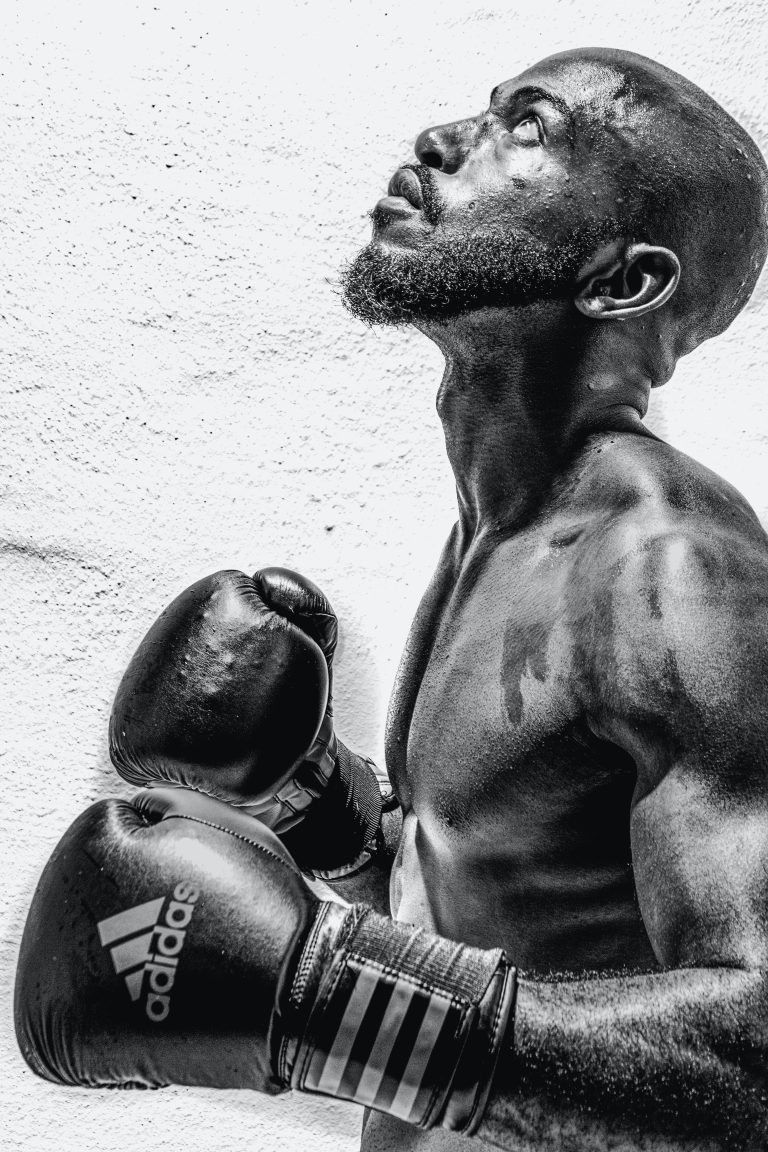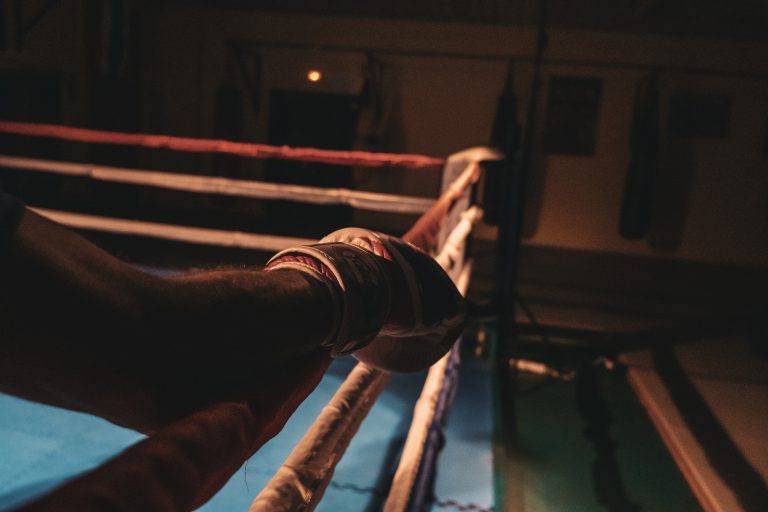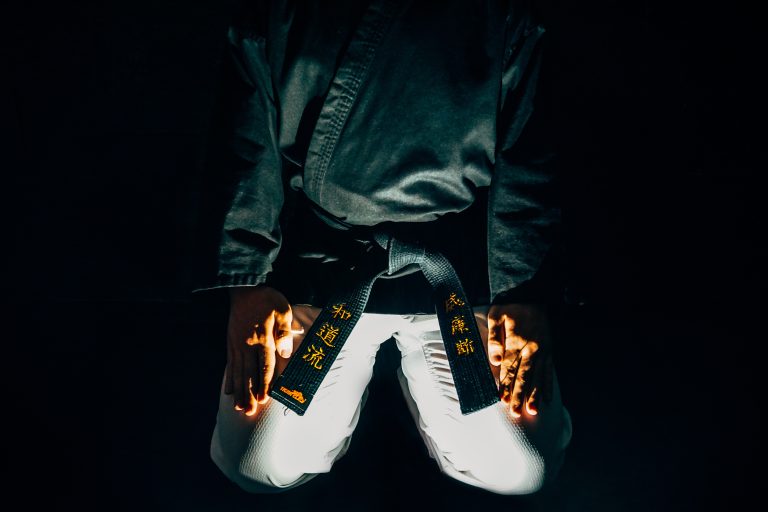Arten von Gürteln im Karate
Karate ist eine Kunstform, die sich auf körperliche Bewegung und Konzentration konzentriert und auf der ganzen Welt praktiziert wird. Gürtel spielen in Karate eine wichtige Rolle, da sie den Fortschritt und die Fähigkeiten eines Karatekas (Karatepraktizierender) widerspiegeln. In diesem Artikel werfen wir einen Blick auf die verschiedenen Arten von Gürteln im Karate.
Weiße Gürtel (Weißgurt, 9. Kyū)
Weiße Gürtel sind die am Anfang ausgegebenen Gürtel und stehen für das Fundament des Karate. Die meisten Karatekas beginnen mit einem weißen Gürtel und müssen eine Prüfung bestehen, um zum nächsten Gürtel aufzusteigen. Weißgurt ist der 9. Kyū im Karate-Ranking und steht für den Anfang einer Reise.
Gelbe Gürtel (Gelbgurt, 8. Kyū)
Gelbe Gürtel sind der nächste Schritt, nachdem ein Karateka den Weißen Gürtel erhalten hat. Die Farbe Gelb steht für die aufsteigende Sonne, die das Wachstum und den Fortschritt symbolisiert. Karatekas auf diesem Niveau lernen einfache Kombinationen von Schlägen und Tritten und entwickeln ihre körperliche Koordination.
Orangene Gürtel (Orangegurt, 7. Kyū)
Der Orangegurt wird an Karatekas vergeben, die ein höheres Verständnis von Karate entwickelt haben und mehr Techniken beherrschen. Mit einem Orangegurt sind Karatekas in der Lage, kompliziertere Kombinationen von Schlägen und Tritten auszuführen und ihre körperliche Fitness zu verbessern.
Grüne Gürtel (Grüngurt, 6. Kyū)
Karatekas, die einen Grüngurt tragen, haben eine fortgeschrittene technische Fähigkeit und beherrschen eine Vielzahl von Karate-Techniken. Der Grüngurt ist ein Zeichen für professionelle Techniken und Fertigkeiten, sowie für Disziplin und Hingabe an das Karate-Training.
Blaue Gürtel (Blaugurt, 5. Kyū)
Blau symbolisiert den Himmel und die unbegrenzten Möglichkeiten. Der Blaugurt wird an Karatekas vergeben, die in der Lage sind, ihre körperliche Fitness und Geschmeidigkeit zu verbessern und ihre Bewegungen zu koordinieren. Karatekas auf diesem Niveau können fortgeschrittene Techniken ausführen und zeigen ein höheres Maß an Konzentration und Durchhaltevermögen.
Braune Gürtel (Braungurt, 3. Kyū – 1. Kyū)
Braune Gürtel sind für Karatekas, die Fortgeschrittenentechniken ohne Ängste beherrschen können und geistig und körperlich in der Lage sind, ihre Fähigkeiten zu verbessern. Der Braungurt symbolisiert Stabilität und Reife. Es gibt drei Stufen von Braungürtel im Karate, nämlich 3. Kyū, 2. Kyū und 1. Kyū.
Schwarze Gürtel (Schwarzgurt/ Dan, 1. Dan – 10. Dan)
Der schwarze Gürtel ist das ultimative Ziel eines jeden Karatekas, denn er zeigt an, dass der Träger ein Meister des Karate geworden ist. Es gibt zehn Dan-Grade im Karate, wobei der 10. Dan-Grad einem lebenden Gott des Karate vorbehalten ist. Der schwarze Gürtel symbolisiert das Ende von einem Anfang und zeigt, dass der Träger die Grundlagen des Karate-Bewegungen beherrscht hat. Der schwarze Gürtel sind für Karatekas, die bereit sind, ihr Wissen weiterzugeben und andere Auszubildende auszubilden.
Fazit
Insgesamt gibt es also sieben Hauptstufen der Gürtelqualifikation im Karate, von Anfängern, die einen weißen Gürtel erhalten, bis hin zu den höchsten, die den begehrten schwarzen Gürtel erhalten. Gürtelrepräsentieren Fortschritt und Leistung und sind wichtige Motivatoren für jeden, der die Kunst des Karate erlernen möchte.
The Different Types of Belts in Karate: Frequently Asked Questions
Karate has a long and rich tradition that is known worldwide. In karate, belt rank is an important aspect of the martial art. Belts signify the student’s progression and proficiency in karate. There are many different types of belts in karate, many of which are not well understood by beginners or even advanced students. In this blog post, we’ll answer some of the most frequently asked questions about the different types of belts in karate.
1. What Is The Purpose of the Different Belt Colors in Karate?
Belts in Karate are used to signify the skill level of a student. The colored belts show that the student has successfully progressed through the ranks and is capable of performing techniques and skills at that level. Each belt color represents a specific level of skill and accomplishment. It helps students to measure their progress and motivates them to improve their skills.
2. What Are the Different Levels of Belt in Karate?
In karate, there are different levels of belts. The ranking system starts with white and goes all the way up to black. Here are the different levels of belt in karate:
- White
- Yellow
- Orange
- Green
- Blue
- Purple
- Brown
- Black
Each belt color represents a specific level of skill that a student has achieved. The higher the belt color, the more advanced the student is in their Karate training.
3. How Do I Know When I’m Ready to Move Up to the Next Belt?
Each dojo may have its own criteria for moving up to the next belt level. However, there are a few general guidelines. Students are typically tested on their knowledge of the techniques, forms, and sparring necessary for the next level. Many dojos also have a minimum time requirement before a student can test for the next belt. It is important to talk to your instructor about your goals and ask for feedback on how to improve your technique and skills.
4. Can I Skip Belts in Karate?
Skipping belts is discouraged in karate. Each belt represents a specific level of skill and knowledge that a student must master before moving on to the next level. Skipping belts can lead to gaps in knowledge and skills, making it more difficult to progress in the long run. If a student feels they are ready to jump a belt, it is best to discuss this with their instructor to get their approval and guidance.
5. Do Belts in Karate have any Special Meanings?
Each belt color in karate has a special meaning. Typically, white represents purity and innocence, yellow represents the sun and its energy, orange represents courage and strength, green represents growth and harmony, blue represents the sky and its vastness, purple represents mystery and spirituality, brown represents the earth and its endurance, and black represents mastery and expertise.
6. Can I Wear a Belt from Another Discipline in Karate?
In most dojos, wearing a belt from another martial arts discipline is not allowed. Each martial art has its own belt ranking system, and it is important to show respect to the tradition and discipline of karate. However, some dojos may recognize rank from other martial arts and allow students to wear their belts while training at that dojo.
7. Can I Buy a Belt from A Store?
While it is possible to purchase a karate belt from a store, it is important to note that belts are typically earned through hard work and dedication. The belt is supposed to represent the student’s progress and accomplishment in karate. Purchasing a belt from a store undermines the significance of the belt and the student’s hard work.
8. Can I Wear My Belt Outside of Karate?
Wearing a karate belt outside of the dojo is not recommended. The purpose of the belt is to signify the student’s skill level and accomplishment in karate, and wearing it outside of the dojo can be seen as disrespectful to the tradition and discipline of the martial art.
In Conclusion
Belts are an important aspect of karate, representing a student’s progress and skill level. Different colors signify different levels of proficiency, and each belt has a unique meaning. Skipping belts and wearing belts from other disciplines is not recommended. It is important to earn belts through hard work and dedication, and to show respect to the tradition and discipline of karate.
Inhaltsverzeichnis






